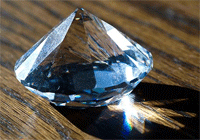Difference Between EGL and GIA
 EGL vs. GIA
EGL vs. GIA
Diamonds are said to be a girls’ best friend. Well, they may indeed be, considering the value of giving such a gift to a girl. Yes, diamonds are very expensive. Yet, as a buyer of diamonds, you may have some questions in regards to the quality of the diamonds. How will you know if it is a good type, or a fairly graded gem? This is the area in which many grading companies and firms specialize. For instance, the EGL and the GIA; these entities give diamonds a whole new meaning.
Both the EGL and GIA are regarded as two of the biggest names in the diamond grading industry. Although these two laboratories grade diamonds in similar aspects of color, clarity and cut, their techniques for grading are still different from one another. So which one should we trust? To find out more about these two laboratories, continue to read.
In terms of history, the GIA, or Gemological Institute of America, was the first to be established. As one of the leading names for diamond branding, the GIA is composed of more than a thousand employees, ranging from scientists and lecturers to authentic diamond graders. As part of their services, they render laser inscriptions on the stones, grade the diamonds, and even conduct lectures to potential consumers of these valuable gems. They are respected for having conceptualized the four Cs of diamond grading, that includes color and clarity among them. Conversely, EGL stands for European Gemological Laboratory. It was founded in a much later year, around 1974. Like the GIA, they also have various specialists all over the world. They are most notable for popularizing the SI3 diamond rating.
In terms of carrying out the consistency of their services worldwide, many consumers and diamond experts agree that the GIA is the more non-biased firm as opposed to the other one. This is because, at least four random expert gemologists grade each diamond, at wherever the GIA office is located. The result is that they grade their diamonds in a much stricter sense. So, what is thought to be a grade G color by EGL, may only be a grade I (lower grade) for GIA. This scenario nevertheless, gives some advantages to the EGL firm. For example, their diamonds are relatively lower priced, even if the said stones are equally graded to their pricey diamond counterparts from the GIA.
1. The GIA is an American laboratory, whereas the EGL is a European borne institution.
2. The GIA is a much older firm compared to the EGL
3. The GIA popularized the four Cs of diamond grading, whereas the EGL sensationalized the SI3 method of rating diamonds.
4. EGL grading is said to be more lenient and generous compared to the stricter and more accurate GIA.
5. An EGL diamond will most likely be less expensive than a GIA graded stone bearing the same rating.
- Difference Between Plant Protein and Animal Protein - March 7, 2024
- Difference Between Crohn’s and Colitis - March 7, 2024
- Difference Between Expression and Equation - March 7, 2024
Search DifferenceBetween.net :
 Email This Post
: If you like this article or our site. Please spread the word. Share it with your friends/family.
Email This Post
: If you like this article or our site. Please spread the word. Share it with your friends/family.


Very helpful article. Gave me all the information I needed to make a more informed choice!. Thank you.